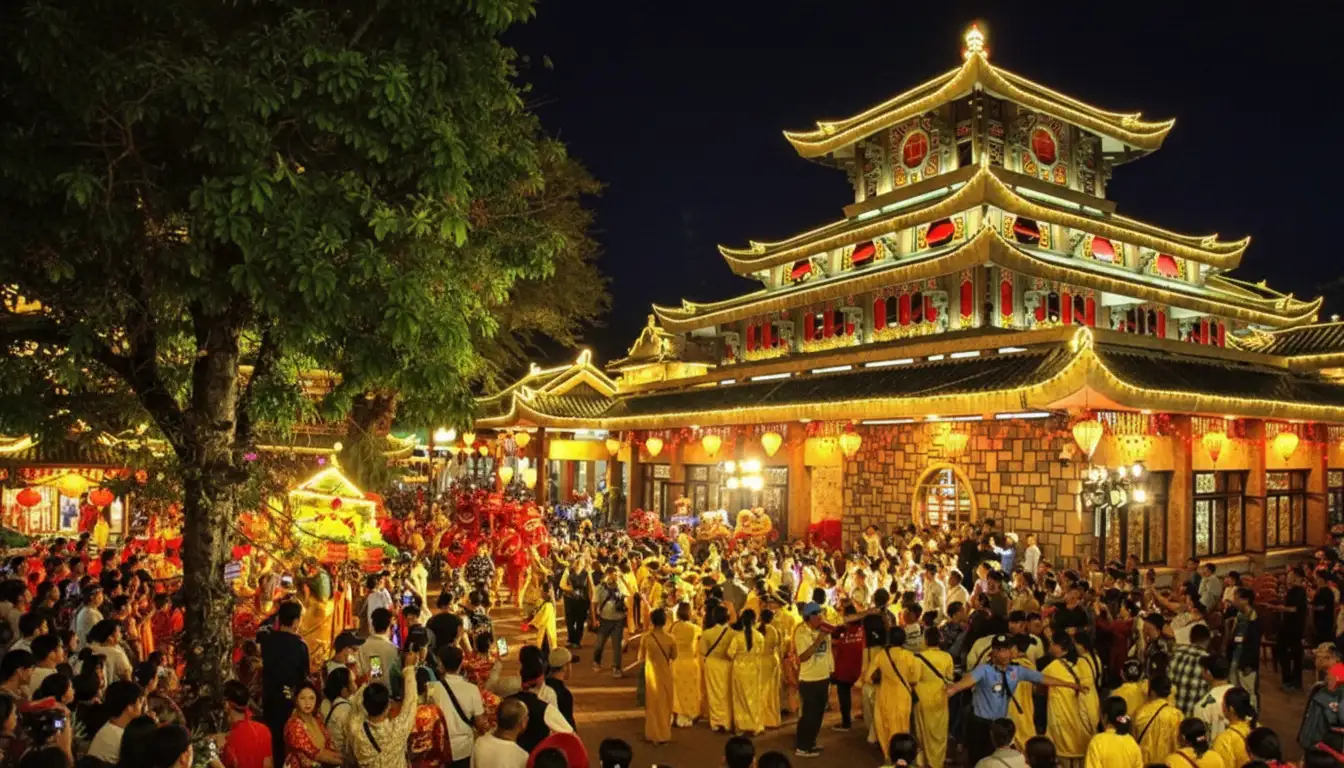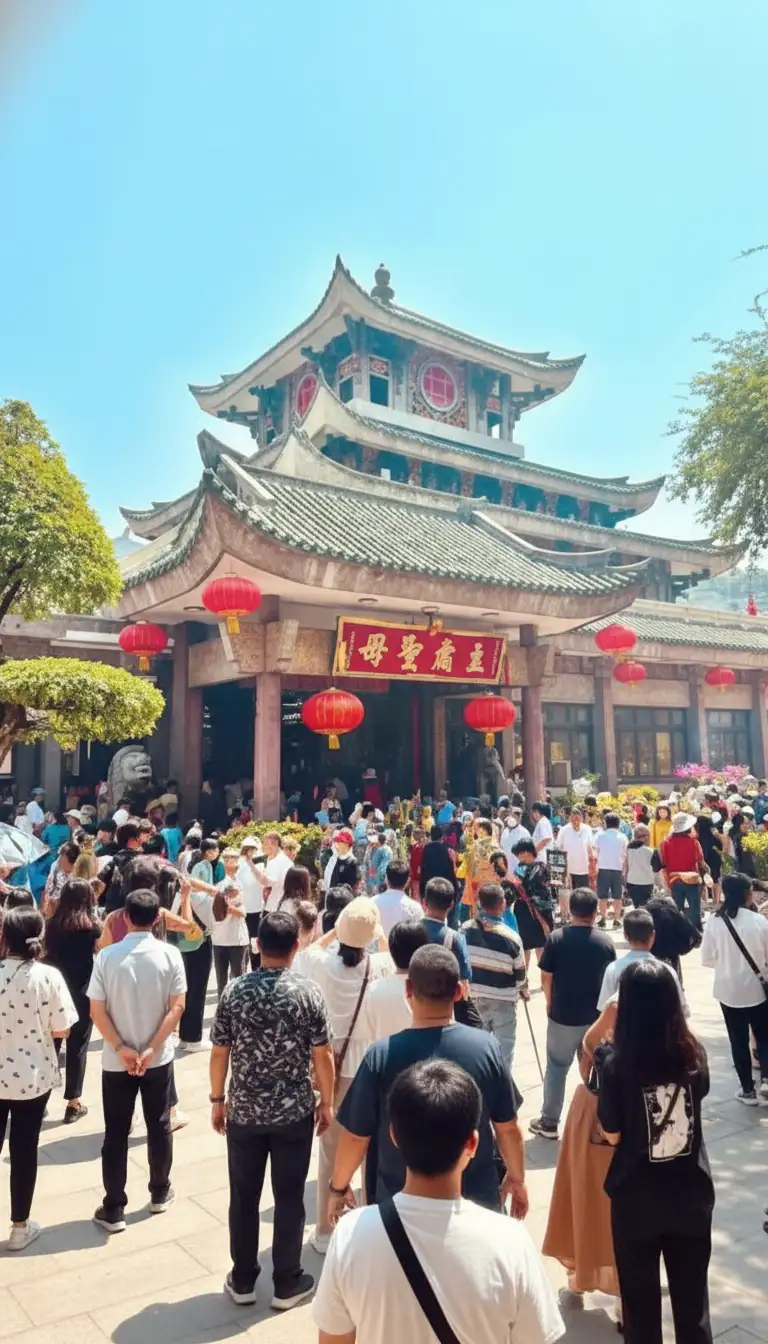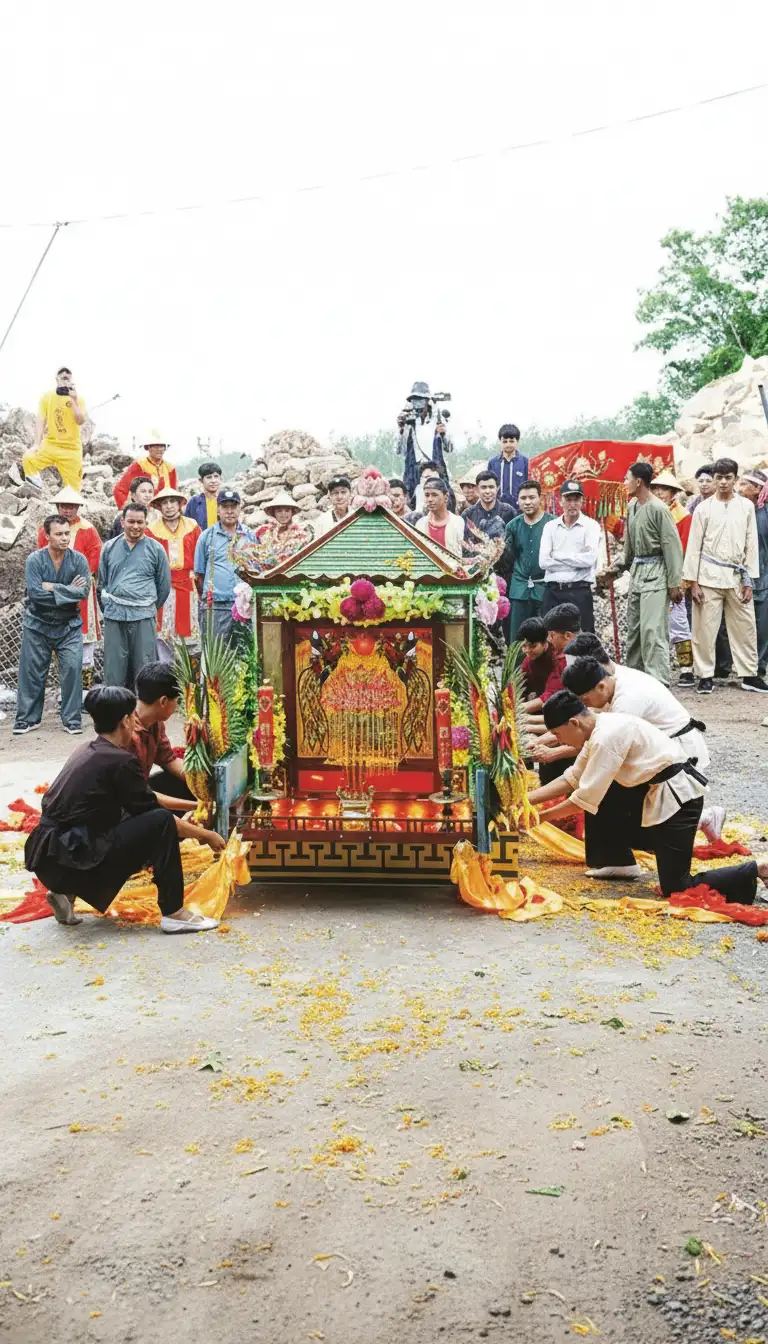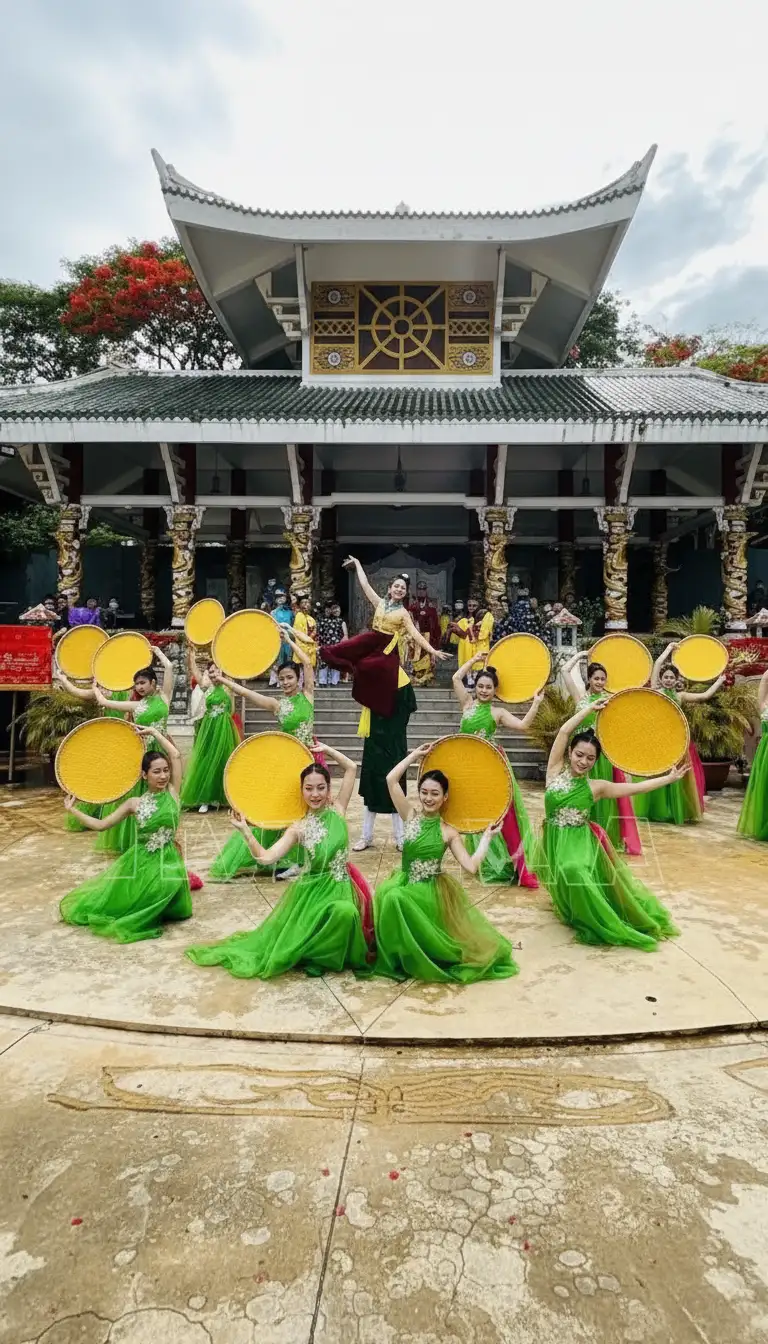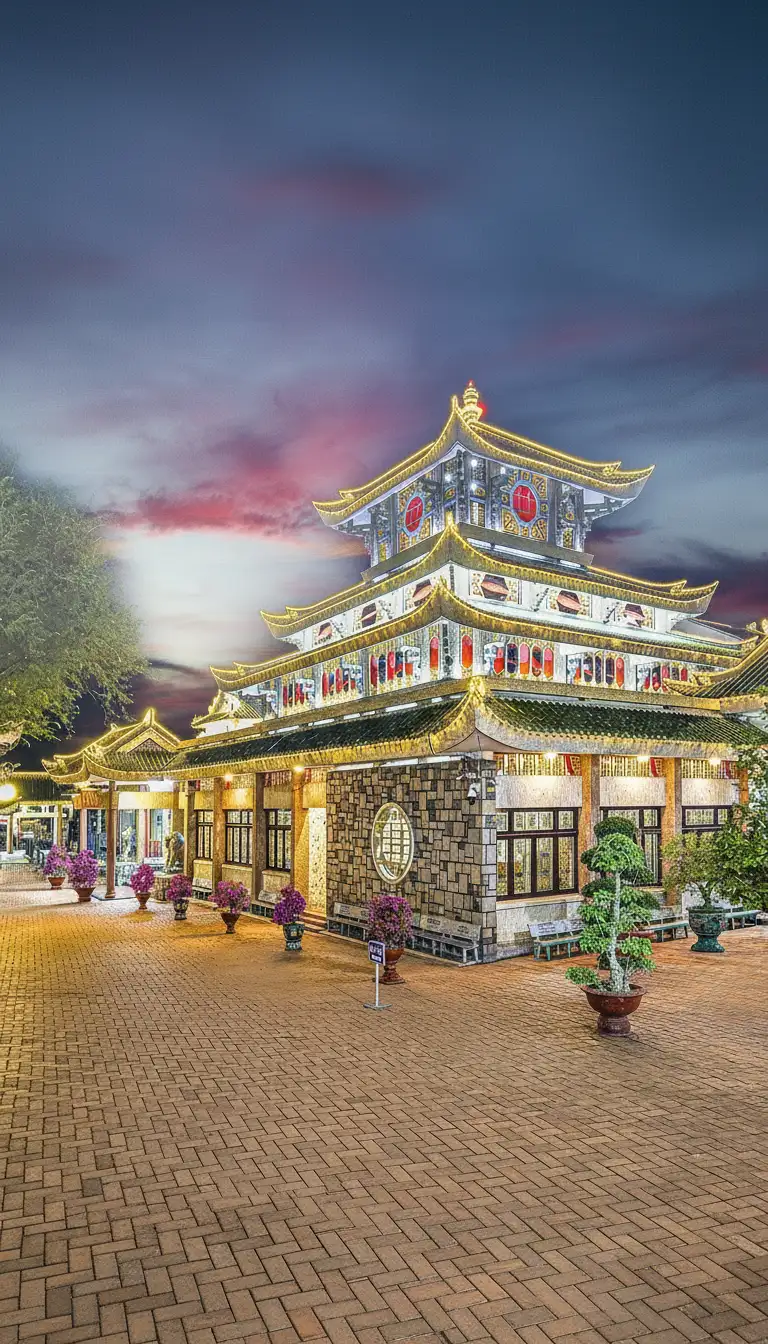Quick Facts
| Data Field (Title) | Content | Icon/Note |
|---|---|---|
| Vietnamese Name | Lễ hội Vía Bà Chúa Xứ Núi Sam | Also known as the Vía Bà Ceremony. |
| Status | UNESCO Intangible Cultural Heritage of Humanity (Nominated/Recognized status). | Recognized as a National Intangible Cultural Heritage of Vietnam. |
| Location | Bà Chúa Xứ Temple, Sam Mountain (Núi Sam), Châu Đốc City, An Giang Province (Mekong Delta). | A major spiritual pilgrimage site in Southern Vietnam. |
| Timing | Annually from the 23rd to the 27th day of the 4th Lunar Month (usually May or June). | The main ceremony is traditionally held on the 25th day. |
| Significance | Worship of Bà Chúa Xứ (The Lady of the Realm), a powerful Mother Goddess believed to protect the land, ensure favorable weather, and bless people with prosperity and health. |
I. Overview: The Most Sacred Festival in the South
The Vía Bà Chúa Xứ Festival at Sam Mountain is one of the largest and most significant spiritual and folk celebrations in Southern Vietnam, attracting millions of pilgrims annually. It is a profound expression of the local people’s faith in the Mother Goddess (Mẫu) system, where Bà Chúa Xứ is revered as the guardian spirit of the region.
The festival preserves a series of ancient and solemn rituals that reflect the cultural blending of the Kinh (Vietnamese), Khmer, Chinese, and Cham ethnic groups in the Mekong Delta.
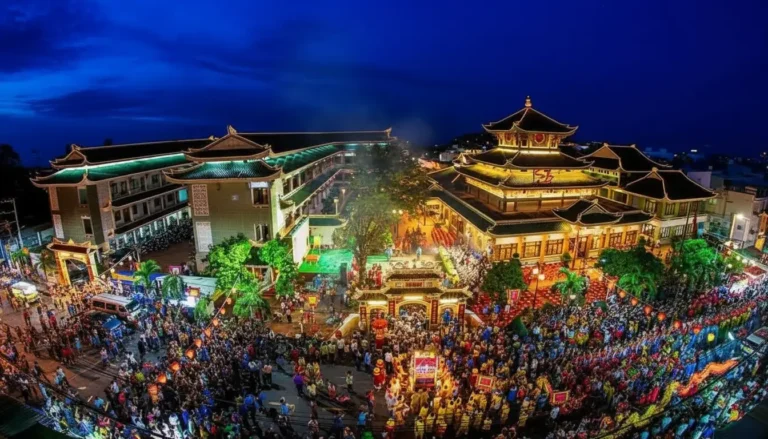
II. Main Ceremonies and Rituals
The festival unfolds over five days, following a precise schedule of highly symbolic rituals:
1. The Statue Bathing Rite (Lễ Mộc Dục)
Date: Midnight of the 24th Lunar Day.
Ritual: This is the most sacred and important ceremony. The statue of Bà Chúa Xứ is bathed with perfumed water and given a new robe and hat. The ceremony is performed by a select group of respectable women.
Significance: The ritual signifies purification and renewal. The old robes and bits of blessed fabric are cut into small pieces and distributed to pilgrims as lucky charms (lộc), believed to grant health and ward off evil spirits.
2. The Procession of the Lady (Lễ Thỉnh Sắc)
Date: Afternoon of the 25th Lunar Day.
Ritual: A grand procession takes place, carrying the ancestral tablets of Thoại Ngọc Hầu and his wives (who were instrumental in the region’s development and built the temple) from their tomb to the Bà Chúa Xứ Temple.
Significance: This ritual honors the historical figures associated with the temple’s founding, connecting the spiritual reverence for the Goddess with the history of the land.
3. The Offering Ceremony (Lễ Túc Yết)
Date: Evening of the 25th Lunar Day.
Ritual: A solemn ceremony featuring traditional offerings (including a whole white pig), prayers, and speeches appealing for the Goddess’s blessings for the country, a peaceful populace, and bountiful harvests.
4. The Theatre Rite (Lễ Xây Chầu)
Ritual: This ceremony is highlighted by the performance of Hát Bội (Vietnamese classical opera) and traditional folk dances (such as the Lion Dance and Cup Dance), which are offered to the Goddess as entertainment and prayer.
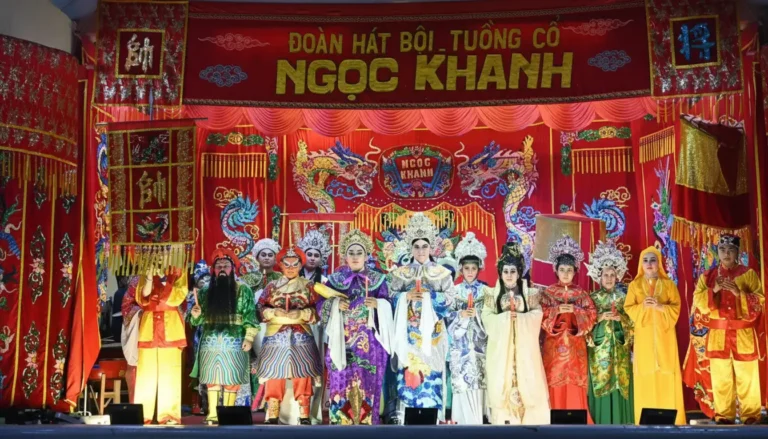
III. Visitor Information
| Guide Field | Details |
|---|---|
| Best Time to Visit | The most vibrant period is from the 23rd to the 27th of the 4th Lunar Month. The main ritual days (24th and 25th) draw the largest crowds. |
| Experience | Visitors can witness the solemn procession, observe the various traditional rites, and participate in the vibrant cultural performances. |
| Pilgrimage Etiquette | Visitors should dress modestly when entering the temple (covering shoulders and knees). The atmosphere is highly spiritual; respect for the local rituals and customs is paramount. |
| Nearby Attractions | Combine your visit with sightseeing at Núi Sam (Sam Mountain) and the border city of Châu Đốc, known for its floating markets and proximity to Cambodia. |
